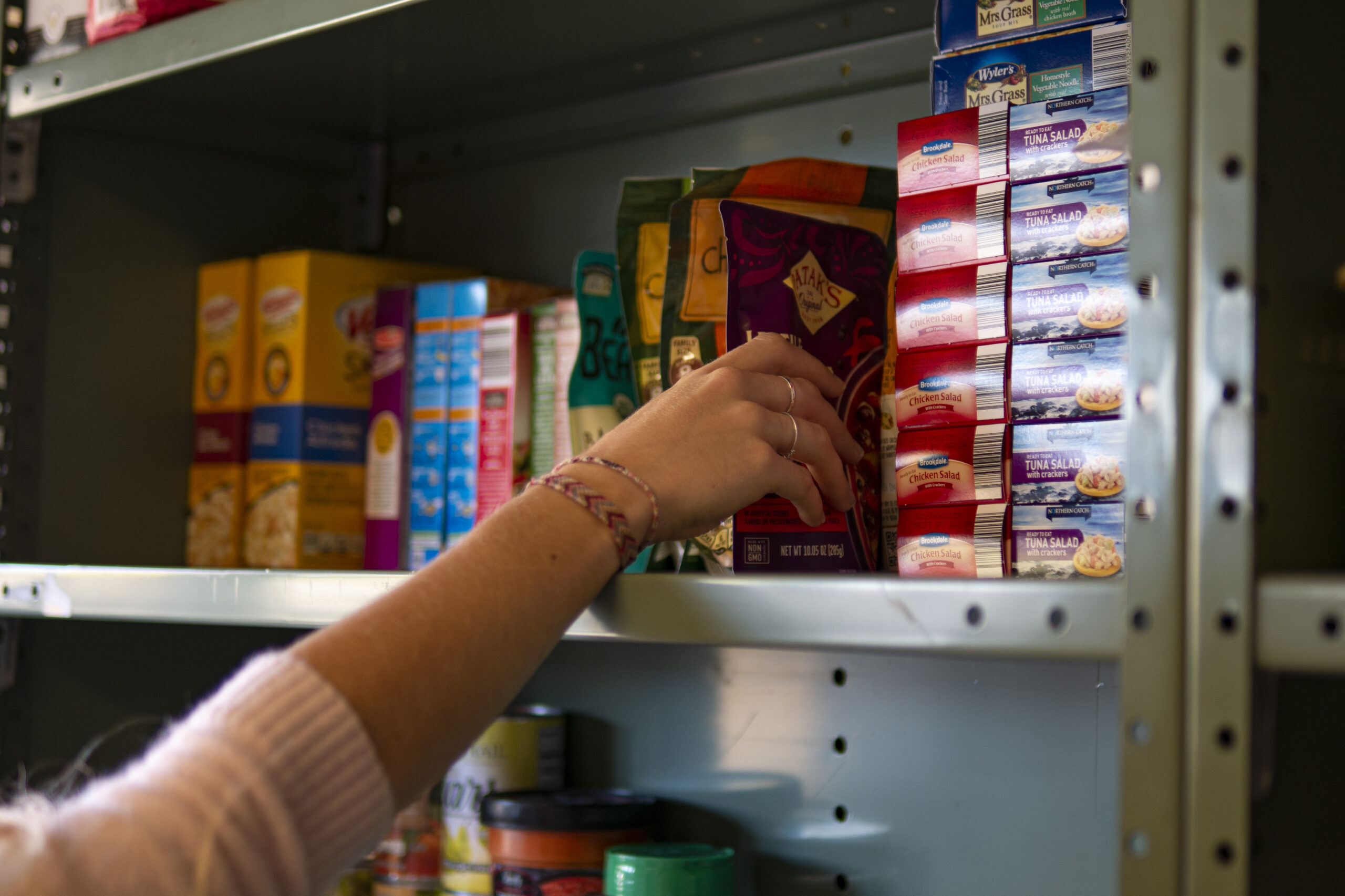Goshen College administers the Higher Education Research Institute survey to graduating seniors every other spring. The survey asks: “In the past year, how often have you felt hungry but didn’t eat because you didn’t have enough money for food?”
In 2018, 13% of GC students reported “occasionally” or “frequently.” 2020 cited a sharp increase to 24% amidst the global COVID-19 pandemic. This year, the number sits at 28%.“This is not a perfect measure because it only looks at students who have made it … through to graduation … since economic insecurity can be a barrier to academic success,” said Justin Heinzekehr, director of institutional research.
“It does give a sense of the scope of the issue on our campus,” he added.
GC is addressing this issue among students through the food pantry in the Leadership Hub of the Union Building. Until the end of the semester, on Tuesdays and Thursdays from 2:30 to 4:30 p.m., students can take meal items or snacks.
The pantry was started last year by Luna Campos, coordinator of student life services. It was initially set up in the commuter student lounge and catered to commuter and international students. The pantry was well used, but she realized a need for something like this to continue on campus.
“The assumption is if you can afford to go to college, you can afford to buy your own ramen noodle, but that’s not true,” said Sarah Mast, an employee in the accounting department. She joined Campos in organizing the effort this year.
“I think it’s really important that in the long run, the college embraces the idea that there is food insecurity within the student population and the communities attached with the student population,” she added.
Campos also recognizes that students living in the dorms also need this service. Although residential students who live in dorms are required to have full meal plans, they do not necessarily have the means to have snacks or meals on hand for days when they do not feel well or lack time to go to the dining hall.
“There’s kind of a food desert on campus once the dining hall closes,” Mast said. “If students don’t have food in their dorms, they might be out of options “unless [they] can get off campus and back on campus safely.”
Winter clothing is also available for students who do not have gear for cold weather.
Campos and Mast hope students will show up for their peers and donate items to keep the pantry stocked.
“It’s not part of a budget anywhere; there’s no one who’s directly involved in making sure that we have products on the shelves,” Mast said.
Mast and Campos would also love it if student groups sponsored donation drives for the pantry.
Campus Activities Council (CAC) hosted a Haunted Ball where students were encouraged to bring shelf-stable food.
They hope the campus community will continue to rise to the occasion and donate to the pantry and that students in need will utilize the service. Volunteers can also stop by to help during open hours.
“Part of why we’re trying to get coverage is that people don’t like to talk about that they might need to use the food pantry or the clothing exchange, and that’s part of what we need to get past,” Mast said.
An online request and donation form can be found in the Campus Communicator. Campos also welcomes suggestions on how to tweak the service to serve students. Those interested can stop by her office in Wyse 115 or email lcampos@goshen.edu.



